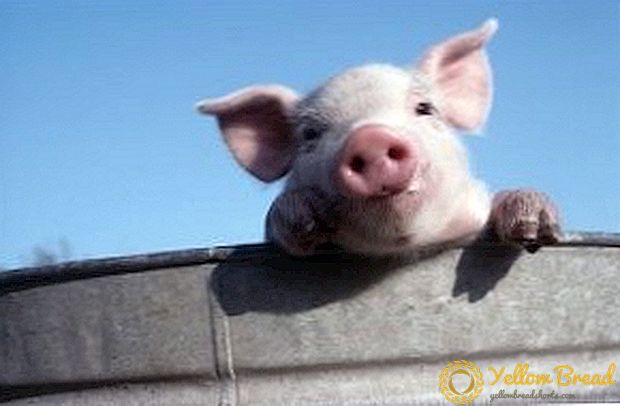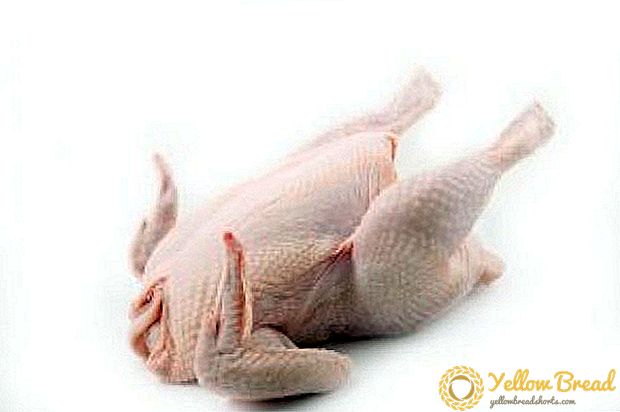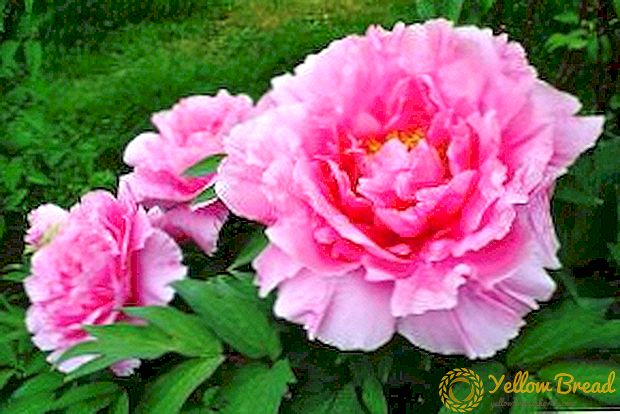 At all times, raspberry appreciated for its beneficial properties, incredible aroma and extraordinary taste. To choose a variety that will be suitable for taste, in terms of yield and compliance with certain climatic conditions - the task is not always easy. Yes, and to a particular variety is sometimes ambiguous. Raspberry "Barnaul" - just such a controversial variety.
At all times, raspberry appreciated for its beneficial properties, incredible aroma and extraordinary taste. To choose a variety that will be suitable for taste, in terms of yield and compliance with certain climatic conditions - the task is not always easy. Yes, and to a particular variety is sometimes ambiguous. Raspberry "Barnaul" - just such a controversial variety.
- Selection
- Description of the bushes
- Description of berries
- Gestation period
- Yield
- Transportability
- Disease resistance
- Winter hardiness
- Advantages and disadvantages
- pros
- Minuses
Selection
The raspberry "Barnaulskaya" was derived at the Research Institute of Horticulture of Siberia named after M. A. Lisavenko in the late thirties of the last century. The basis for it are varieties "Viking" and "Usanka".  In the State Register, the variety Barnaulskaya was included in 1961 in the Northern, Northwestern, Central, Volga-Vyatka, Middle Volga, Ural, West Siberian and East Siberian regions. She was accepted for state testing in 1964.
In the State Register, the variety Barnaulskaya was included in 1961 in the Northern, Northwestern, Central, Volga-Vyatka, Middle Volga, Ural, West Siberian and East Siberian regions. She was accepted for state testing in 1964.
It is recommended to grow this variety in the backyards of the Non-chernozem zone.
Description of the bushes
When describing a variety of raspberry "Barnaul", it should be noted that its bushes are not very sprawling, upright, slightly higher than the average growth, reaching a height of two meters.
They also have a fairly high ability to form shoots: on 1Q. m square can form up to twenty siblings.
Branches are thin, with tops looking down.  The shoots are light brown, dull, with medium internodes, closer to the autumn they turn brown with a red tint and a rather strong wax coating. The spikes on them are short, thin, but hard, the same color as the shoots, and with some green expansion at the base.
The shoots are light brown, dull, with medium internodes, closer to the autumn they turn brown with a red tint and a rather strong wax coating. The spikes on them are short, thin, but hard, the same color as the shoots, and with some green expansion at the base.
On the branches are corrugated, wrinkled, flat leaves from medium to large size, on top of green, and below - whitish felt.
Description of berries
The berries of Barnaul raspberry are not very large, short, egg-like forms, red, dull, tasty, sweet and sour, with a delicate aroma and some shine. The weight of each berry is up to 2 gr. Fruits are loosely coupled, therefore not suitable for transportation.  The berries ripen early and almost at the same time, for 2-3 picking them can be collected, but if you do not have time to do it quickly, then they begin to crumble. This type of plant is popularly called "obsypnaya."
The berries ripen early and almost at the same time, for 2-3 picking them can be collected, but if you do not have time to do it quickly, then they begin to crumble. This type of plant is popularly called "obsypnaya."
On the one hand, such organization in harvesting is convenient enough, but, on the other hand, I want to get berries longer. The fruits of the purpose of the appointment of universal, suitable for processing, tasting them - 4.5 points.
Gestation period
Raspberry "Barnaul" - an early ripe grade. The fruits ripen together.
Yield
It relates to medium grades in terms of yield. Up to 1.5 kg of fruits can be harvested from a single shrub, the average yield from one hundred squares of plantings may be 60 kg of berries. The entire crop is harvested in a short time, if you do not have time, it can crumble. 
Transportability
The small drupes of the Barnaul variety berries are not sufficiently coupled with each other, therefore they do not tolerate transportation and lose their presentation.
Disease resistance
This variety is not resistant to diseases, viruses and pests common among fruit-bearing plants.
It is moderately resistant to gray rot and anthracnose and is susceptible to damages with spider mite, purple spot, didimella, botrytis, raspberry mosquito.
The fight against these diseases begins almost from the moment of the appearance of the first leaflets on the plant. 
Winter hardiness
Variety "Barnaul" has sufficient winter hardiness, but in severe frosts can freeze. Young, not sufficiently ripe shoots are also slightly able to freeze in the winter, so it is better to cover them for the winter.
Advantages and disadvantages
Like every cultivated plant, raspberry "Barnaul" has both advantages and disadvantages.
pros
The advantages of this class include:
- almost simultaneous ripening of berries;
- the ability to harvest in a short time;
- the taste and aroma of berries;
- sufficient plant endurance in terms of winter and drought tolerance;
- possessing beneficial therapeutic and cosmetic properties, vitamin C.

Minuses
Disadvantages raspberry "Barnaul" following:
- not resistant to all sorts of diseases;
- has an insufficiently high level of yield;
- rapid shedding of berries after ripening;
- not subject to transportation;
- young shoots of raspberry can freeze;
- quite high tendency to form shoots;
- non repair






